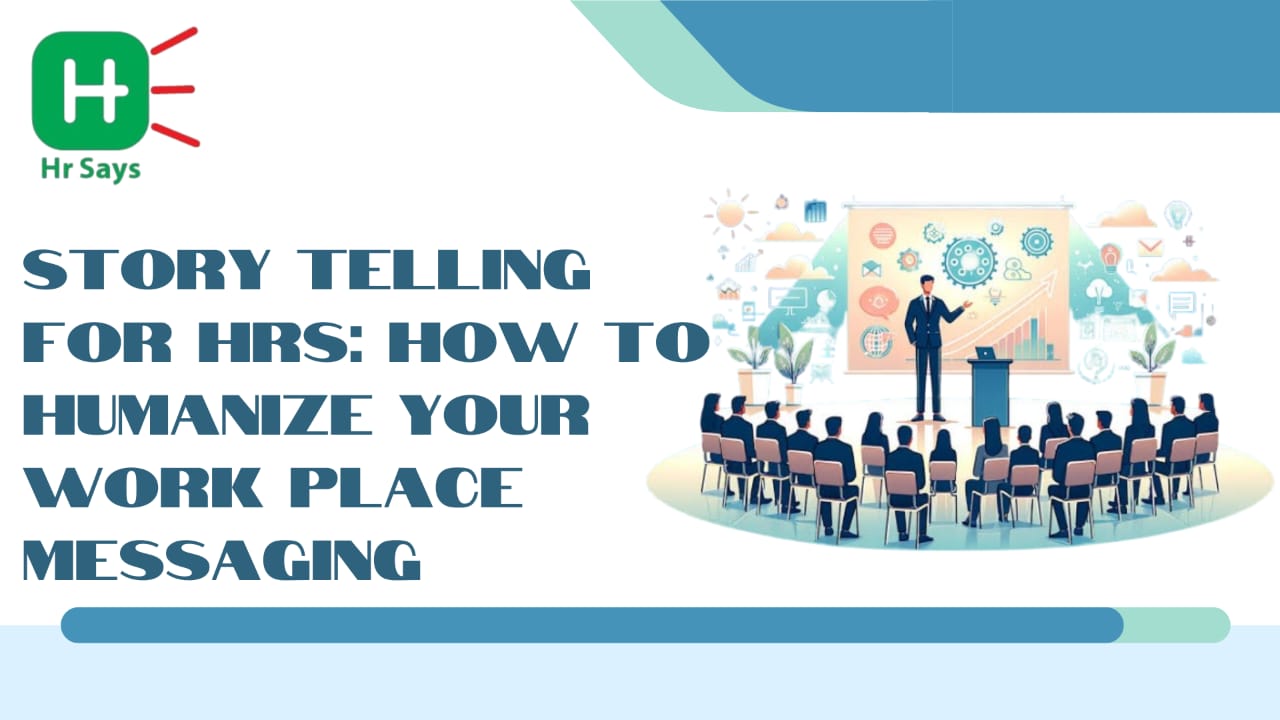Forget corporate jargon. Forget bullet-pointed policies. In 2025, the HR teams that connect best with employees are the ones that communicate with stories, not statements.
Storytelling isn’t a soft skill anymore — it’s a strategic HR tool. Whether you're launching a new policy, welcoming a new hire, or managing change, the right narrative can turn resistance into buy-in, confusion into clarity, and silence into conversation.
🧠 Why Storytelling Works in HR
According to a 2024 Deloitte Insights report, companies that adopt narrative-based internal communication see:
- 34% higher engagement during policy rollout
- 21% fewer internal disputes post-policy changes
- More trust in leadership communication
People don’t remember clauses. They remember the why. They remember the who. They remember how they felt.
🏢 Real-World Storytelling, No Fancy Campaigns Required
🔹 Case 1: Building Trust Through ChangeAn HR team in a growing edtech company faced resistance when they restructured leave policies. Instead of sending a PDF memo, they started with a story:
“When Meena, our customer success lead, had to care for her sick father, she used all her leaves — and then some. This new policy ensures no one else has to choose between work and family again.”
The message landed. The policy was accepted. People saw the heart behind the process.
🔹 Case 2: Celebrating Culture with Micro-StoriesA SaaS company introduced a “Story of the Month” series — featuring real employee stories of collaboration, customer delight, or problem-solving. These were shared on Slack and LinkedIn — one story, one paragraph, no buzzwords.
Over six months, it turned into their most-liked internal series. New hires cited it as “what made the company feel human.”
✍️ 5 Ways HR Can Use Storytelling
|
Scenario |
What to Share |
Why It Connects |
|
Onboarding |
A story of a nervous joiner who later led a major project |
Builds psychological safety |
|
Policy Change |
A real moment that inspired the policy |
Explains the “why” behind the rule |
|
Learning & Growth |
Personal lessons from team leads |
Normalizes continuous improvement |
|
Recognition |
Tell the why behind someone’s achievement |
Moves beyond “employee of the month” clichés |
|
DEI Initiatives |
Stories of everyday inclusion |
Makes DEI personal, not performative |
💡 Story Formats That Work (No Copywriting Needed)
- First-person voice: “Here’s what I learned from…”
- Mini case study: “We tried X, failed at Y, succeeded at Z”
- Before/after snapshot: “Our exit rate was 15% → 8% — here’s the story”
- Origin story: “Why we changed our hiring panel structure”
🧰 Tools to Help You Build the Habit
- HR Slack Channels – Collect anonymous employee wins or reflections
- Airtable/Notion – Maintain a story bank tied to your HR calendar
- Canva Docs or Google Slides – Build visual storytelling decks for townhalls
- LinkedIn or company blogs – Repurpose internal stories externally (with consent)
✨ Final Thought: HR is Already Full of Stories — You Just Have to Share Them
HR is the only department that touches everyone’s story — from their first hello to their last goodbye. Use that privilege to communicate not just policies, but meaning.
The best HR leaders aren’t just administrators. They’re narrators of the organization’s human truth.
Coming soon on HRsays: The HR Influencer Playbook — How to Build Trust, Not Just a Following
📢 Got a story worth sharing? A hiring pivot, a culture shift, a people-first experiment? HRsays is your platform. Submit your story and let others learn through your lens.

 HR isn’t just about policies — it’s about people. This article teaches HR professionals how to use storytelling to make culture, change, and feedback more relatable. Whether you're launching a new policy or reflecting on a team challenge, narrative techniques can boost understanding and trust. We break down story arcs, context-setting, and emotional tone to help you shift from formal to human-centered communication. If you’ve ever struggled to make HR content engaging, start here.
HR isn’t just about policies — it’s about people. This article teaches HR professionals how to use storytelling to make culture, change, and feedback more relatable. Whether you're launching a new policy or reflecting on a team challenge, narrative techniques can boost understanding and trust. We break down story arcs, context-setting, and emotional tone to help you shift from formal to human-centered communication. If you’ve ever struggled to make HR content engaging, start here.













.jpeg)
.jpeg)

.jpeg)

.jpeg)


.jpeg)

.jpeg)

.jpeg)


